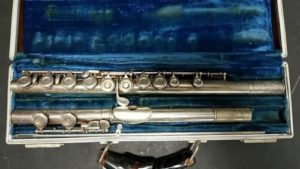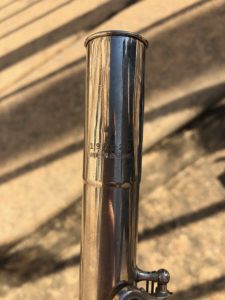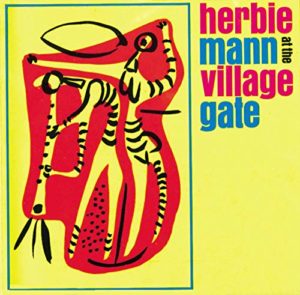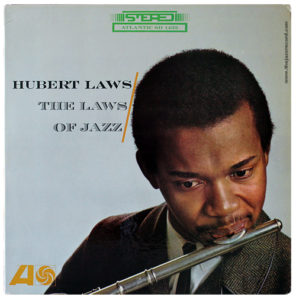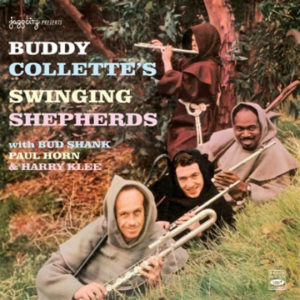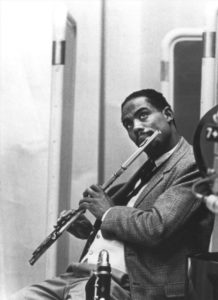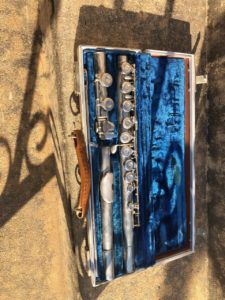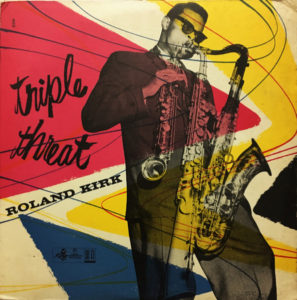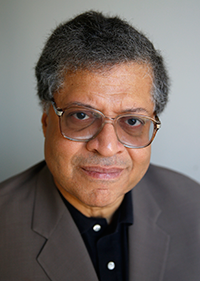I never wanted it in the first place. As I’ve told people over six decades, from Grade 4 on, I wanted almost anything but a flute. A trumpet was my first choice for elementary school music education. With Miles Davis lulling me to sleep practically every night from toddler-hood and other pieces of my living-room soundtrack ranging from Chet Baker and Clifford Brown to Gerald Wilson and Art Farmer, what else could I want but a trumpet?
No dice.
“We. Can’t. Afford. A. Trumpet,” my father said, staring deep into my eyes and enunciating every word as if it were one of those times I’d done something irreparably bad to the sofa or the bathroom sink. “If. You. Want. To. Play. An. Instrument. We. Can. Only. Afford. A. Flute. Now. Are. You. SURE. You. Want. An. Instrument? Are…You…SURE…You…Want…A…Flute?”
Well…No…Dad…I had my heart set on a trumpet. (And Jesus, does that speech stretch longer in one’s memory or what?) Any brass instrument would have been A-OK with me. When, not many years later, my younger brother was given the chance to try the trombone, I picked it up out of curiosity and found, to my surprise, that I could actually get a note out of it on my first try.
As for the flute…let’s just say that I was a slow learner when it came to things like metal mouth-pieces and where exactly to align the mouthpiece beneath my lower lip. “It’s just like blowing into an empty Coke bottle,” others would insist, and I had to take their word for it because I didn’t think empty Coke bottles were useful for anything besides the nickels you could get in those days for their return.
Thus began a near-lifelong grind, a lengthy arranged marriage with scattered intervals of mutual understanding and, once in a great while, unexpected joy. The flute and I decided that if we were stuck with each other, we’d try to make the best of it. Understating matters, I was not the most devoted partner in this transaction, especially in the beginning. I understood perfectly that practice was the gateway to musical proficiency, and I tried. But I simply could not meld my being with this long silver tube, this slender, imperious enigma with padded keys. It never beckoned me to do great things.
Also – and this is unfair, mortifying and fucked up in at least a half-dozen ways (consider this a trigger warning), there was in those ancient early-1960s a consensus stigma attached to young male flautists since most flute players in junior high and high school orchestras were female. (“Whassamatter, Eugene?” one fifth grade wit asked me. “They run out of clarinets?”) My awkwardness in all things athletic and most things social already marked me as, putting things as baldly as my contemporaries did, A Pussy! I internalized this ugliness for much of my early years carrying a flute around and it added to the brick wall of self-consciousness that I lugged around with me along with my flute and briefcase. (Why, yes, I did! Talk about asking to get beat up!)
And in case you think the times we live in are more evolved: sometime near the start of this new century I was casually conversing on the phone with a friend of mine who told me one of her school-age daughters was taking up the flute. My subsequent “Hey, so did I!” aroused a deep sigh at the other end of the phone and eventually the following query: “Were your parents trying to make you gay?” Understand that she was merely commenting, drolly, as ever, on the presumptions and superstitions of a more savage time and place. So I wasn’t offended. I’m betting today there’d be many more who are.
Still, the flute did enable me to read music. It never gave me total facility and absolute confidence in fusing sound with notation, but at least I knew where everything was supposed to be when I practiced sufficiently. And after the flute (by then, the Boosey & Hawkes model you see pictured above) followed me to high school and got me into the marching band and orchestra, I made still another discovery: I could actually seek and find notes with my ears and even string together familiar melodies from scratch. I could poke my way through the first chorus of “The Swingin’ Shepherd” and even the occasional pop hit, especially “(Sittin on) The Dock of the Bay.” No one would then, or ever, mistake me for Hubert Laws or Herbie Mann, but it was nice to know that I had at least a modicum of ability, even if there was no teacher at the school in those days who could help me take my jazz leanings to the next level.
Somewhere in my junior year of 1968-69, I stumbled into what was likely my peak as an instrumentalist: a chance to play flute interludes for The Open Stage, a Hartford-based theater company that was putting on “A Hand is On the Gate,” Roscoe Lee Browne’s staged renderings of African American poetry. There were other, better young musicians my age recruited for a backstage combo and to this day I find it somewhat miraculous that I was able to hold my own with them. One of them even asked me to help her out with an audition tape. Was it possible that, after years of approach-avoidance games with each other, the flute and I were discovering, if not passion, something close to respect for one another? A spark to be kindled into, at the very least, a productive, long-term alliance of sorts?
Again, no dice. And the person who finally got between us was Eric Dolphy, the nonpareil reed magician whose music I’d only casually encountered at other people’s houses. Not my father’s brand of whiskey, saying the least. He’d seen Dolphy live a couple years before the latter’s death in 1964. It was at a Newport Jazz Festival and Dolphy was honking back at seagulls in mid-solo with his saxophone. Dad thus determined him to be weirder than Roland Kirk, which is to say, too weird for further study. I came to love both of them without reservation, especially Dolphy. “Left Alone,” “Sketch of Melba,” along with the flute solos Dolphy took with Charles Mingus, Oliver Nelson, Chico Hamilton and his own bands were enough to convince me that he was the undisputed heavyweight champion of the flute. Any presumptions I ever had of even approaching Dolphy’s magnitude, much less tooling along securely in a slower lane were deflated. It didn’t help that as far as my fellow jazz aficionados were concerned, the flute placed at least third among the instruments conferring immortality upon Dolphy, probably even fourth. Thomas Chapin, another reed master and Rahsaan Roland Kirk devotee who, as with Dolphy, died too soon, also played a killer flute. But also as with Dolphy, it wasn’t the only instrument he played. It wasn’t just that I could no longer imagine myself playing the flute as well as these and other greats. It was that I couldn’t imagine giving as much dedication to playing the instrument as it required – and deserved.
And besides, given that I’d by age 15 fully committed myself to writing, I would find then and in years to come a new outlet for my natural inclination for fusing sound and meaning. I frequently wonder whether I would have discovered that impulse on my own without a flute or any musical instrument at all. I’m sure the flute helped; a significant factor mitigating my earliest reservations, even my grievances over not getting that trumpet I’d wanted at the outset. All I know is that I began to feel more like a musician when I wrote than when I was merely Playing Music.
So I let things go with the flute, even as the aforementioned Boosey & Hawkes followed me in subsequent years from Hartford to three other cities and at least five other homes. After my most recent move back to Philadelphia last June, I took the old thing out just to see if I could still get a sound out of it. I could. But it turned out that a sound was all I wanted, and my flute deserved more attention, certainly less neglect. Not wishing to wait for a buyer, I searched for an appropriate local charity and found one in Play On, Philly, which provides music education to students from Kindergarten through Grade 12. Just before the flute left my long and fitful stewardship, I noodled with it one last time by playing along with one of Rahsaan Roland Kirk’s earliest tracks, a 1956 recording of “Triple Threat” on which no flute is heard – except for mine.
Taking everything into account, it was worth the time and — guess what, Dad? — the money, too.
